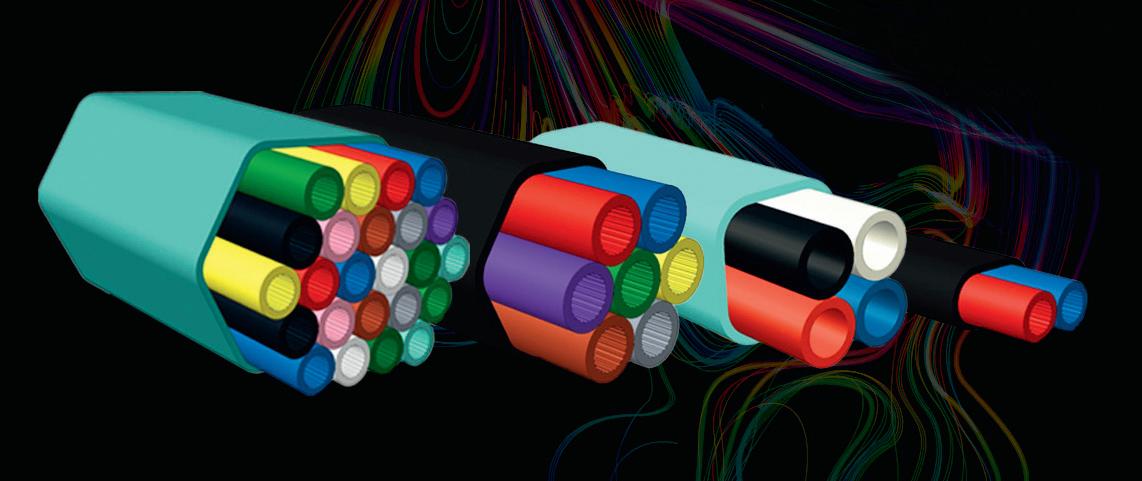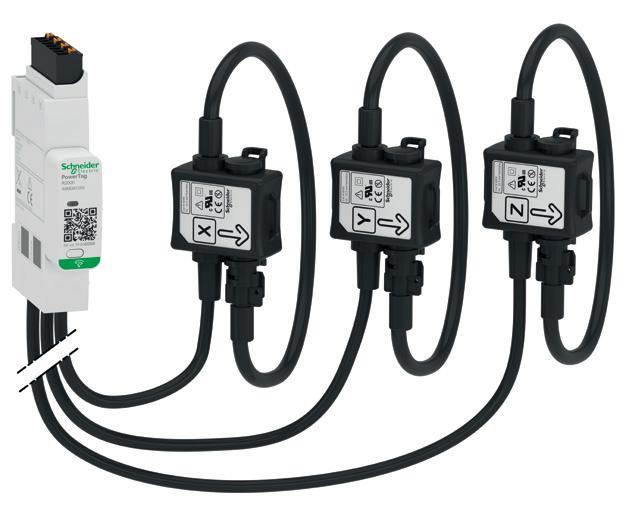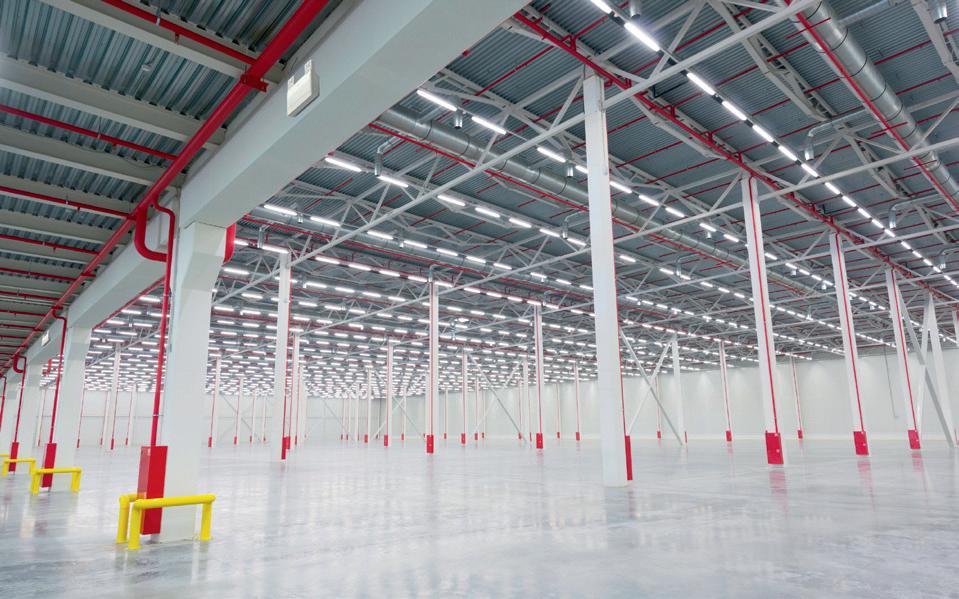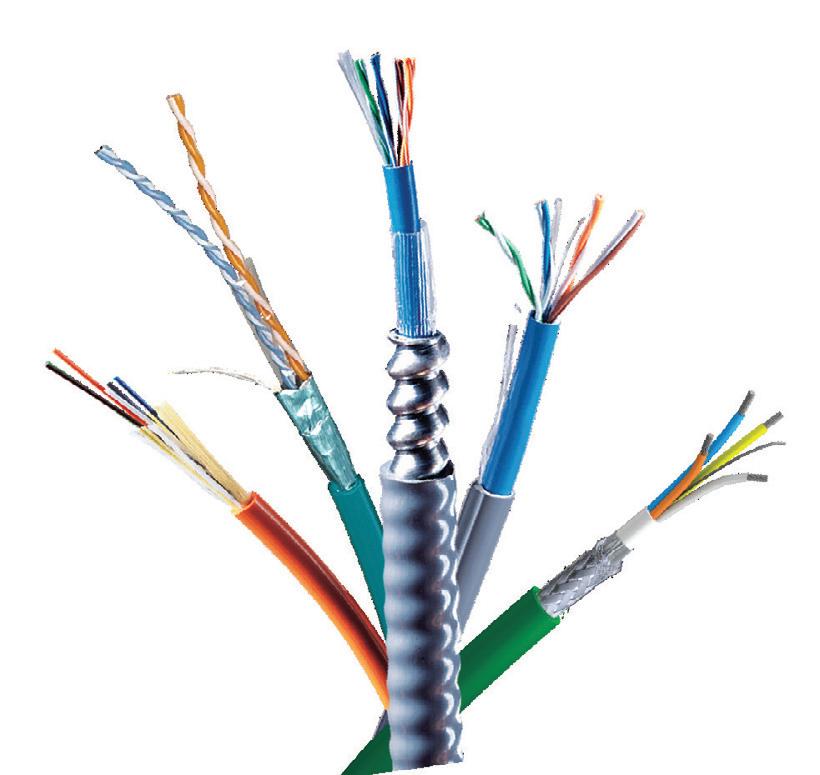
6 minute read
The road to recovery for the construction industry
THE ROAD TO RECOVERY
FOR THE CONSTRUCTION INDUSTRY
George Maglaras, Sales & Technical Director, Stanley Black & Decker
Infrastructure will continue to stimulate the economy and jobs in 2021, in turn supporting residential and commercial projects.
The COVID-19 pandemic has caused unprecedented challenges for businesses, governments and organisations globally. In Australia, the construction industry remains resilient and essential; however, numerous factors have disrupted construction activities and reduced productivity. Businesses in the construction industry need to embrace innovation and offer solutions that will increase efficiency to remain relevant. Job site productivity has been a huge challenge due to COVID-19. This is the result of several factors including the level of skilled trade able to work onsite at any time and the shift of resources due to social distancing restrictions. Supply chain management has been challenging, as has job site phasing.
The road to recovery will require continual government and private investment to drive the various sectors of the market supported by the availability of finance. Shorter-term recovery will likely be dependent upon the federal and state governments’ expenditure and investment in essential infrastructure.
Economic activity generated by increased public sector investment in infrastructure will not only offset the downturn in private sector investment, but also create necessary momentum to entice private sector businesses to focus on important areas of commercial building like health and education.
Looking at 2021, we’ll see the infrastructure journey continue to stimulate the economy and jobs which will in turn support residential
©stock.adobe.com/au/romul014

and commercial projects. In a 2021 COVID normal environment, we anticipate higher ‘work done’ volumes than 2020 and see an effort to play catch-up to reign in the delays in construction timelines from 2020. Hopefully next year we will see the industry getting back on its feet and fast-tracking project starts that will serve the years ahead.
A substantial number of current and future infrastructure projects continue to underpin Australia’s construction market. The most significant of these already under construction include the $16.8 billion WestConnex project in Sydney, the $15.5 billion Sydney Metro City and Southwest Project – Stage 2 of Sydney Metro, the $11 billion Melbourne Metro Rail Project (in conjunction with the private sector) and the $10 billion Melbourne-to-Brisbane Inland Rail.
For newly merged DeWalt Engineered by Powers, 2021 will see the business continue to drive product innovation, complete solutions that are trade focused and add value to the job site productivity. The 2021 construction trends will be on safety, productivity and a continuing shift in construction methods and systems such as an increase of modular construction and prefabricated building components that support efficiency and productivity.
In the post-pandemic era, there will be a boost in modular construction and prefab building. The manufacturing process is suitable for this time period. Manufactured buildings are large and already promote low worker density with plenty of room for social distancing. Prefabricated buildings have the dual advantage of being affordable and potentially temporary, which works well in a time of uncertainty.
Supply chain diversification
The construction industry is less reliant on global supply chains, but some projects will continue experiencing sourcing delays. In the medium-term supply chain breaks will recover as approvals and projects start, as the government stimulates investment which supports the construction and renovation segment.
From the outset of COVID, DeWalt has worked intensely with global supply chains to ensure we can achieve the best supply rates to support the industry with core products through these fluctuating times. Suppliers will continue to play a major role in building businesses and influencing success and profitability. It is critical to use trusted suppliers, ensuring that a mutually beneficial relationship is established.
Health and safety
Safety is always a concern, and meeting compliance and transparency standards is an obligatory requirement when it comes to working on major construction projects. In the COVID-19 environment, health and safety is priority. Separation is a particularly difficult thing to achieve on a job site, where cooperation and teamwork are the norm. Anticipate smaller crews and the use of staggered shifts to minimise crowding on job sites, along with a need for enhanced equipment and cleanliness protocols.
With construction work in Australia forecast to be $240 billion in 2021[1] the industry must embrace innovation and offer solutions that meet new demands and increase efficiency in order to remain relevant.
[1] ABS and ACIF CFC
Blown fibre system
The Excel Enbeam blown fibre system includes a range of microducts from single to multiway, in designs suitable for either internal or external applications. It is complemented with enhanced fibre performance units of 4 through to 12 fibre in both single and multimode. The internal Enbeam microducts come in an ice blue jacket colour, while the external ducts have a black highdensity polyethylene outer sheath, with aluminium foil inserted between the jacket and microducts to provide moisture protection. Each of the designs have internal longitudinal ribbing and a permanent lining of Silicore to reduce friction during cable placement.
The enhanced performance fibre units are designed specifically for blown fibre applications, and are optimised for installation within a range of blown fibre ducts. The fibres are contained within a soft acrylate layer, which cushions the fibres. This is coated with a hard layer for strength and finally a low-friction coating to ensure low drag and maximise blowing distances within the ducts. The acrylate coatings are easy to remove to expose the 250-micron primary-coated fibres for quick splicing. The fibres are colour-coded according to TIA-598-C. The fibre units are available in OM3, OM4 and OS2 compliant with G-652 and G.657.A1 bend insensitive specifications as standard.
Excel Networking
www.excel-networking.com

Energy monitoring and measurement
Schneider Electric has expanded the PowerLogic PowerTag Energy range with three new products: PowerTag Flex 160A, PowerTag Robe up to 2000A and PowerTag Link Display, offering enhanced monitoring of electrical assets.
Designed for any type of building, the PowerTag Energy monitors and measures current, voltage, power, power factor and energy. Data are sent wirelessly to a concentrator/gateway, which can provide data to energy or building management systems, or through webpages.
Customised email or SMS alarms enable facility managers to remotely monitor their electrical assets. Nonintrusive, wireless communication immediately enables easiness of installation and commissioning.
PowerTag Energy is a key enabler of IoT EcoStruxure Power architecture. It brings new opportunities to today’s power systems and energy management applications.
Schneider Electric
www.se.com/au


LED twin spot light fitting
The Stanilite TwinSpot from ABB features an ultra slimline LED design and high lumen output, making it suitable for use in large spaces and high ceiling installations in commercial or industrial applications.
Featuring fully adjustable heads with 140° beam angle and NexusRF Infinity compatible, the model offers 500 lumens output and features the latest lithium ferrophosphate (LiFePO4) battery technology to deliver a longer service life.
The slimline, low weight Stanilite TwinSpot is available in two options — manual and NexusRF — and is simple to install. The removable cover also provides easier maintenance.
ABB Australia Pty Ltd
www.abbaustralia.com.au









